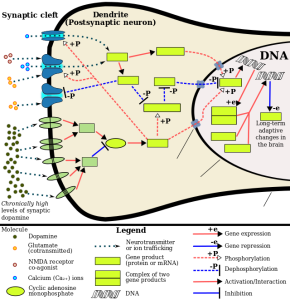[retweet][facebook]
 Clinical trials are currently underway to determine the effectiveness of acupuncture in treating drug addiction. Yet, there are still many unanswered questions about the basic mechanisms of acupuncture. Additional research using animal models is of primary importance in understanding the basic mechanisms of acupuncture. Chronic exposure to drugs of abuse produces a withdrawal state as reflected in increases in brain reward thresholds, and this change in reward threshold appears in be opposite to actions of the drug administered acutely. These opposite proponent and opponent processes during the development of drug addiction may contribute to the intense drug craving experienced by addicts. Based largely on animal self-administration, the reinforcing effects of drugs have been linked to central dopamine activity in the mesolimbic dopamine system. While little is known about the basic mechanism of acupuncture in treating drug addiction, the neurochemical and behavioral data reviewed earlier showed that acupuncture directly or indirectly affects the mesolimbic dopamine system. These results suggest that acupuncture helps to maintain the homeostasis and balance between positive and negative processes involved in drug addiction. Moreover, in a more general sense, these results suggest that acupuncture can be used as a therapeutic intervention for correcting reversible malfunction of the body by directing brain pathways and thus contributes to balance in the central nervous system by regulating neurotransmitters. Future studies should determine if acupuncture therapy can influence any of the other neurotransmitters (GABA and glutamate) believed to play a role in regulating dopamine release. It would also be interesting to assess the effect of acupuncture on drug reward thresholds in animals trained to self-administer drugs of abuse.
Clinical trials are currently underway to determine the effectiveness of acupuncture in treating drug addiction. Yet, there are still many unanswered questions about the basic mechanisms of acupuncture. Additional research using animal models is of primary importance in understanding the basic mechanisms of acupuncture. Chronic exposure to drugs of abuse produces a withdrawal state as reflected in increases in brain reward thresholds, and this change in reward threshold appears in be opposite to actions of the drug administered acutely. These opposite proponent and opponent processes during the development of drug addiction may contribute to the intense drug craving experienced by addicts. Based largely on animal self-administration, the reinforcing effects of drugs have been linked to central dopamine activity in the mesolimbic dopamine system. While little is known about the basic mechanism of acupuncture in treating drug addiction, the neurochemical and behavioral data reviewed earlier showed that acupuncture directly or indirectly affects the mesolimbic dopamine system. These results suggest that acupuncture helps to maintain the homeostasis and balance between positive and negative processes involved in drug addiction. Moreover, in a more general sense, these results suggest that acupuncture can be used as a therapeutic intervention for correcting reversible malfunction of the body by directing brain pathways and thus contributes to balance in the central nervous system by regulating neurotransmitters. Future studies should determine if acupuncture therapy can influence any of the other neurotransmitters (GABA and glutamate) believed to play a role in regulating dopamine release. It would also be interesting to assess the effect of acupuncture on drug reward thresholds in animals trained to self-administer drugs of abuse.
Excerpt from:
